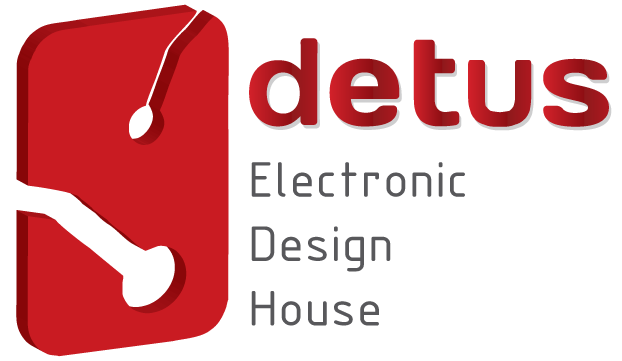Best practice guide for electronic design in interconnected products
Creating electronic products with communication capabilities is no longer an exception. Today, industrial sensors, remote control systems, and devices connected to digital platforms are part of the technological landscape in many companies. However, turning a prototype into a robust, reliable, and interconnected product requires much more than knowing how to solder components or write firmware.
Electronic design is the foundation of everything the device will do. When it comes to products that communicate with external systems, any design flaw can lead to instability, interference, or unpredictable behaviour. These factors directly compromise the reliability and scalability of the system.
At Detus, we apply an engineering approach grounded in real-world conditions. This guide summarises the essential best practices we follow to ensure robustness, predictability, and integration capability from the earliest development phases.
Separate analog and digital circuits
It is essential to keep sensitive circuits away from data lines or high-frequency interfaces to ensure reliable measurements. Noise generated by digital signals can interfere with analog signals, causing incorrect readings or unpredictable fluctuations.
To avoid such interference, both physical and logical separation must be guaranteed, with continuous and well-referenced return planes and clearly defined return current paths.
Power planning and local decoupling
In interconnected systems, energy consumption can vary rapidly and significantly. Every time data is transmitted, digital signals are switched, or antennas are activated, the circuit requires a stable and immediate power response.
To ensure stability and predictable performance, it is fundamental to apply best practices such as:
-
Decoupling capacitors placed as close as possible to each integrated circuit
-
Adequate reserve capacitance to absorb momentary current spikes
-
Selection of regulators with sufficient margin to handle load variations
-
Clear separation between noisy switching zones and sensitive circuit areas
Electromagnetic compatibility from the design stage
Devices with communication capabilities emit and receive signals that, if not properly controlled, can degrade the overall performance of the system. Many issues that only appear in real-world environments result from poor layout, lack of proper isolation, or failure to manage noise between subsystems.
A preventive approach should include, from the beginning:
-
Avoiding unnecessary or extended current loops
-
Ensuring well-defined and interconnected continuous return planes
-
Controlling impedance on critical traces, especially communication lines
-
Using components with built-in filtering wherever possible
-
Protecting external connections with transient suppression circuits
Protect and isolate interfaces
Any input or output is a potential vulnerability, subject to noise, electrostatic discharge, or faults caused by external connections. To ensure product reliability and longevity, it is essential to apply protection mechanisms suited to the signal type, voltage levels involved, and the operating environment.
Recommended measures include:
-
Galvanic isolation wherever there is risk of potential difference between systems
-
Protection elements against overvoltage, such as protection diodes, varistors, or TVS arrays
-
Properly sized termination resistors for differential buses such as RS-485 or CAN
-
RC filters on lines subject to long cables or noisy environments
Develop firmware in parallel with hardware
The electrical behaviour of an interconnected system results from the interaction between hardware and firmware. Therefore, both must be planned and developed in a coordinated way, ensuring functional consistency and operational robustness.
At Detus, we ensure:
-
Compatibility between firmware response times and physical signal behaviour
-
Implementation of safety mechanisms such as timeouts, state checks, and controlled resets
-
Support for secure updates and tolerance to communication failures
-
Protection against data corruption in case of power loss
Modularity and simplicity in the circuit
The inherent complexity of an interconnected product can be managed with a modular approach. Well-defined subcircuits, accessible test points, and clear separation of functions make diagnosis, maintenance, and product evolution easier.
Overly dense layouts should be avoided. We prioritise clean, well-documented designs with easy access to critical signals.
Prepare for production from the beginning
Good electronic design must be not only functional, but also manufacturable, testable, and scalable. Careful selection of components available on the market, preparation of the PCB for automated assembly, and inclusion of test points all contribute to an efficient industrial process.
It is recommended to:
-
Use components with a reliable supply history
-
Adopt standard footprints aligned with assembly processes
-
Include electrical test points and functional check areas
-
Automatically generate technical documentation and up-to-date bills of materials
Conclusion
The success of an interconnected product begins long before the first power-on. It starts in the design phase, with early identification of risks and the rigorous application of solid engineering principles. A circuit that only works in the lab is not enough. The goal is to ensure reliable and consistent operation, regardless of where the product is installed.
At Detus, we design electronics for the real world. We apply these best practices at every stage of development to ensure your next product is ready to connect, grow, and endure with confidence.
